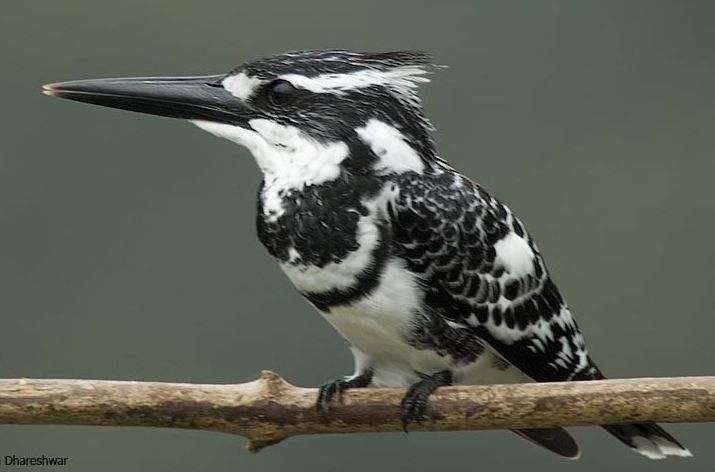|
| Query: kingfisher | Result: 5th of 777 | |
Pied Kingfisher (Ceryle rudis) - wiki
| Subject: | Pied Kingfisher (Ceryle rudis) - wiki
| |

| Resolution: 715x472
File Size: 38556 Bytes
Date: 2005:12:24 09:39:55
Camera: NIKON D70 (NIKON CORPORATION)
F number: f/8.0
Exposure: 1/160 sec
Focal Length: 600/1
Upload Date: 2007:08:20 17:45:50
|
Pied Kingfisher
From Wikipedia, the free encyclopedia
[Photo] Pied Kingfisher. Ceryle rudis. Photograph by Rakesh Dhareshwar rdrakesh AT gmail.com Ranganthittu, Karnataka India. Date 24 December 2005.
The Pied Kingfisher (Ceryle rudis) is a kingfisher in the near passerine bird family Cerylidae, the water kingfishers. It is the only member of the genus Ceryle.
It is common throughout sub-Saharan Africa and southern Asia from Turkey to India to China. It is resident, and most birds do not migrate, other than seasonal movements.
The Pied Kingfisher is estimated to be the world's third commonest kingfisher, and is a noisy bird, unmissable within its range.
It is mainly a specialist fish-eater, although it will take crustaceans and large aquatic insects. It usually hunts by hovering stationarily over the water and dives down bill first directly below to catch fish.
It has evolved two unique strategies, shared by no other kingfishers. The Pied Kingfisher can hunt in both salt and freshwater. It can also deal with prey without returning to a perch, and can, for example, catch a second fish, or eat small prey in flight. These adaptations mean that this kingfisher can hunt over the sea or in estuaries that lack the perches required by other kingfishers.
This approachable largish (25cm) bird is unmistakable, with its exclusively black-and-white plumage. Unlike some kingfishers, it is quite gregarious, and forms large roosts at night. It can be easily tamed.
Its nest is a hole in a bank, on its own or in a colony, where it lays 3-6 white eggs. The pied kingfisher sometimes reproduces co-operatively, with young non-breeding birds assisting the breeding pair. As with all kingfishers, the nest of a Pied soon becomes unsanitary.
This species was initially believed to be descended from an ancestral American green kingfisher which crossed the Atlantic Ocean about 1 million years ago (Fry & Fry, 2000). However, more recently, Moyle (2006) considered it more likely that the Pied Kingfisher and the American green kingfishers are derived from an Old World species, with the Pied Kingfisher or its ancestor losing the metallic coloration afterwards.
http://en.wikipedia.org/wiki/Pied_Kingfisher
| The text in this page is based on the copyrighted Wikipedia article shown in above URL. It is used under the GNU Free Documentation License. You may redistribute it, verbatim or modified, providing that you comply with the terms of the GFDL. |
|
^o^
Animal Pictures Archive for smart phones
^o^
|
|

